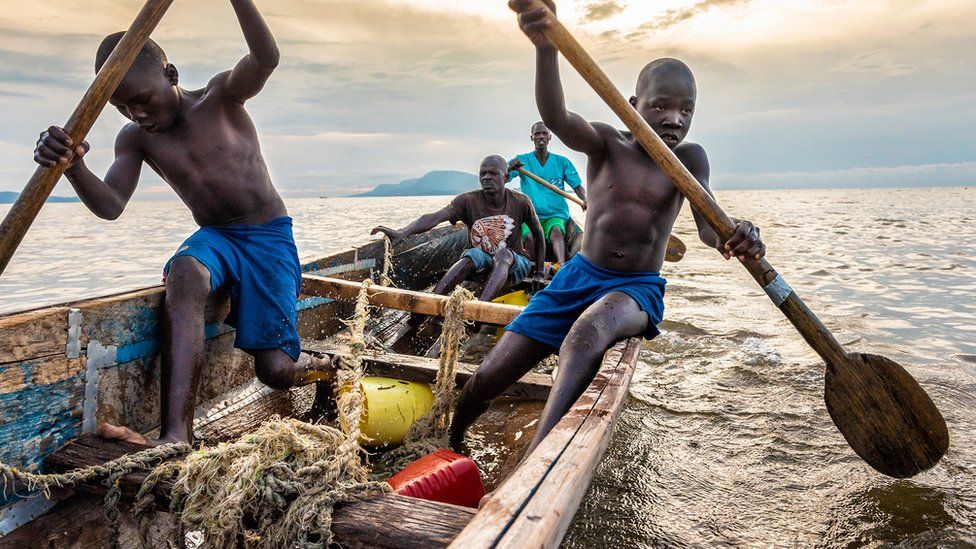In recent years, the concept of the blue economy has gained significant traction as nations worldwide explore sustainable ways to utilize their oceanic and freshwater resources. One remarkable example of this burgeoning trend can be seen in the East African region, where Lake Victoria’s freshwater, the world’s second-largest lake, has become a focal point for harnessing aquatic resources to drive economic growth and innovation.
Lake Victoria’s multifaceted journey toward sustainable development exemplifies the blue economy’s potential to transform local communities, promote environmental stewardship, and foster innovation.
Resource Abundance and Economic Opportunity
Lake Victoria’s immense size and rich biodiversity have made it a hub for aquatic resources that can fuel economic growth across East Africa. With its expansive water surface of 68,800 square kilometers and a catchment area covering parts of Kenya, Uganda, and Tanzania, Lake Victoria holds vast potential for various industries, including fisheries, aquaculture, transportation, and tourism.
The lake’s fishing industry, in particular, supports millions of livelihoods, with fish contributing significantly to the region’s protein consumption and export revenues. The flourishing fishing industry has the potential to uplift local economies, reduce poverty, and enhance food security, thereby contributing to the United Nations’ Sustainable Development Goals (SDGs).
Sustainable Fishing Practices and Environmental Conservation
While Lake Victoria’s aquatic resources offer unparalleled economic opportunities, their exploitation has not come without challenges. Overfishing, illegal fishing practices, and inadequate regulations have threatened the lake’s delicate ecosystem and the sustainability of its resources. However, governments and international organizations have begun to address these concerns by implementing sustainable fishing practices and regulatory measures.
Collaborative efforts such as the Lake Victoria Fisheries Organization (LVFO) have been instrumental in coordinating regional policies to ensure the responsible management of fisheries. These initiatives balance economic gains and environmental preservation by promoting sustainable practices and monitoring fish stocks.
Aquaculture Innovation and Economic Diversification
In addition to traditional fishing, Lake Victoria’s blue economy embraces aquaculture to drive innovation and diversify economic activities. Aquaculture, or the controlled cultivation of aquatic organisms, presents a sustainable alternative to wild fishing, reducing pressure on natural fish stocks. By promoting the farming of tilapia, catfish, and other species, East African countries are boosting domestic fish production and improving food security.
Furthermore, cultivating high-value aquatic products like prawns presents economic diversification and export growth opportunities. These initiatives stimulate local economies and alleviate pressure on the lake’s resources.
Tourism Potential and Ecological Sustainability
Beyond fisheries and aquaculture, Lake Victoria’s allure as a tourist destination is gaining momentum. The lake’s scenic beauty, diverse wildlife, and historic sites have the potential to attract both domestic and international tourists. Ecotourism ventures and leisure activities such as boat cruises, birdwatching, and water sports offer new revenue streams for local communities.
However, promoting tourism must be approached with caution to prevent the degradation of the lake’s ecosystem. Sustainable tourism practices and environmental conservation efforts are essential to balance economic development and preserve Lake Victoria’s natural splendor.
Investment and Infrastructure Development
The success of Lake Victoria’s blue economy hinges on adequate investment and infrastructure development. Governments, private sector players, and international partners support projects that enhance the lake’s potential. Investment in modern fishing vessels, processing facilities, cold storage, and transportation infrastructure is crucial to ensure the efficient supply chain of aquatic products.
Additionally, improved connectivity and trade networks are essential for facilitating the movement of goods and services within the region and beyond. By channeling resources into these areas, East African nations are positioning themselves to maximize the benefits of the blue economy.
Challenges and Collaborative Solutions
While Lake Victoria’s blue economy journey holds immense promise, it has challenges. Climate change, pollution, invasive species, and population growth threaten the lake’s health and economic prospects. Tackling these complex issues requires collaborative solutions that transcend national boundaries. Governments, regional organizations, and international partners must work together to implement sustainable policies, share best practices, and build resilient ecosystems.
For instancefightinght against, water pollution necessitates cross-border efforts to regulate waste management and protect the lake’s water quality. Such cooperation will be pivotal in ensuring the longevity of Lake Victoria’s blue economy and its contributions to the well-being of East African societies.
Lake Victoria’s aquatic resources are a hope for sustainable growth and innovation in East Africa’s blue economy. From traditional fishing practices to modern aquaculture ventures, the lake’s potential to drive economic development while preserving its ecosystem is a testament to the power of responsible resource management. As governments, industries, and communities collaborate to address challenges and seize opportunities, Lake Victoria is a prime example of how the blue economy can provide a path toward prosperity, environmental conservation, and a brighter future for the entire region.

